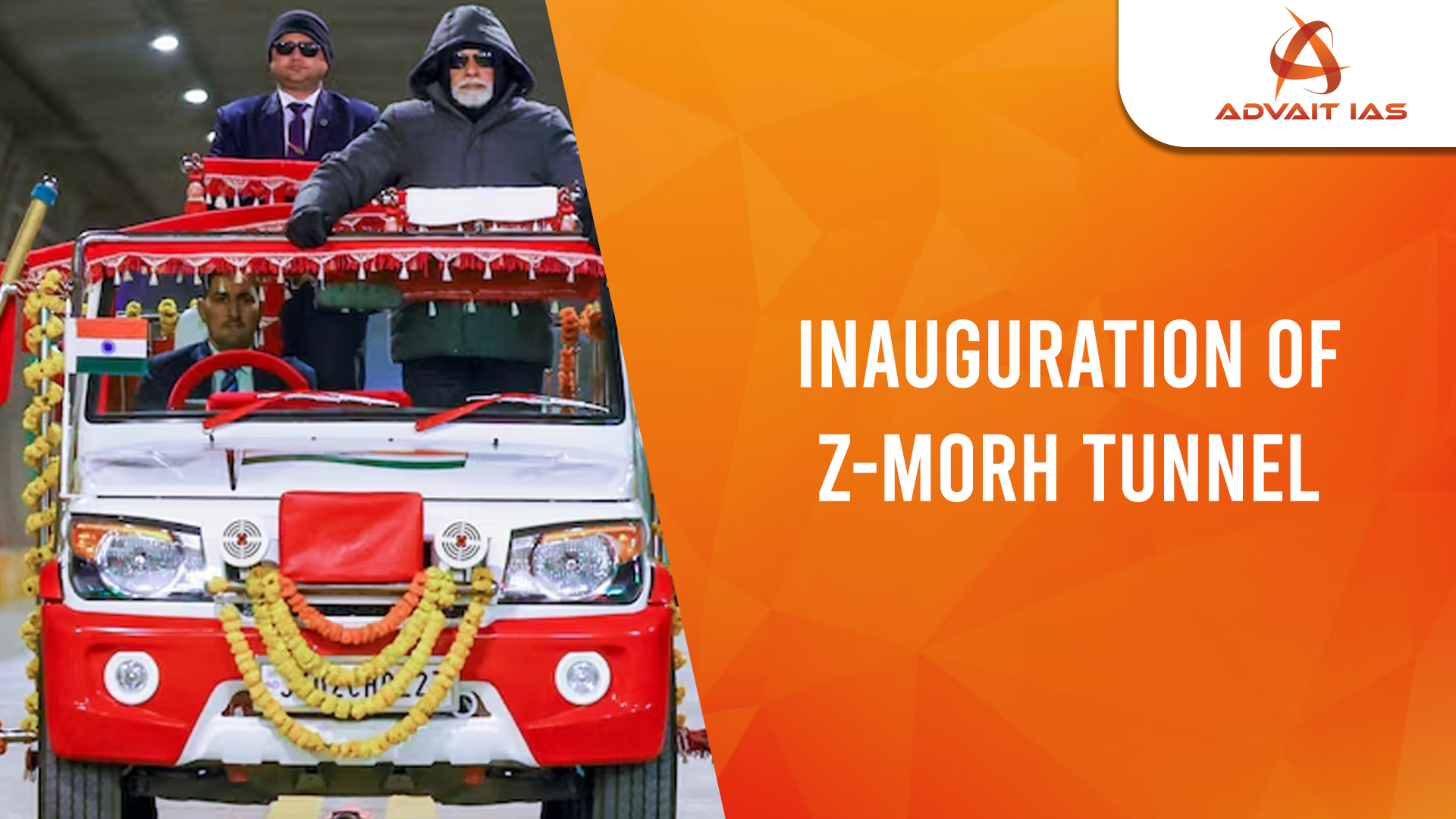The Prime Minister inaugurated the Z-Morh tunnel, a strategic infrastructure project that ensures all-weather connectivity between Ladakh and Kashmir, bypassing hazardous avalanche-prone zones.
Key Features of the Z-Morh Tunnel
- Location:
- Situated at an altitude of 8,650 feet in Ganderbal, Kashmir, on the Srinagar-Leh highway (NH-1).
- Built under the Thajiwas Glacier, the tunnel has been renamed the Sonamarg Tunnel.
- Specifications:
- Length: 5 km
- Budget: ₹2,400 crore
- Reduced the distance to Ladakh by 6 km, complementing connectivity improvements with the Zoji La Tunnel.
- Timeline:
- Construction began in 2015 under the Border Roads Organisation (BRO) and later was taken over by the National Highways and Infrastructure Development Corporation Limited (NHIDCL).
- Strategic Pairing with Zoji La Tunnel:
- The Zoji La Tunnel, spanning 15 km, Asia’s longest bi-directional tunnel. Together, these tunnels ensure seamless all-weather connectivity between Srinagar, Kargil, and Leh.
Strategic Significance
- Military Utility:
- Guarantees year-round logistical and troop movement to strategically sensitive regions in Ladakh.
- Economic and Civilian Advantages:
- Boosts tourism and trade by offering reliable access to Sonamarg and the wider Ladakh region.
- Provides a safer alternative for transportation, reducing travel time and bypassing avalanche-prone zones.
- Regional Development:
- Enhances connectivity for remote areas, contributing to the socio-economic upliftment of the region.
The Z-Morh and Zoji La tunnels symbolize India’s commitment to infrastructure development in challenging terrains. These projects not only ensure robust connectivity to Ladakh but also reinforce India’s strategic preparedness while fostering regional development and integration.






